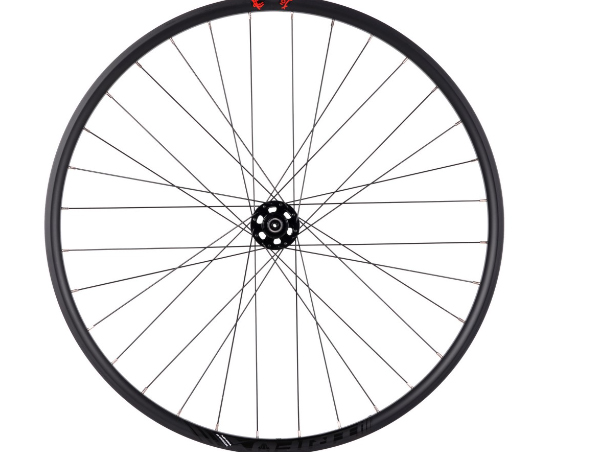
More and more cyclists are beginning to switch to disc brakes. With the advantages of improved stopping power, and superior modulation especially in wet conditions, it is not surprising to see why. But, is the 700c wheelset disc brake the right fit for your cycling needs? In this blog post, we will dive deep into everything you need to know about the 700c wheelset disc brake, including its features, advantages, and potential drawbacks. So, read on to find out more. What is a 700c Wheelset Disc Brake? Before we go to its features, let us first understand what is a 700c wheelset disc brake? A 700c wheelset is the most common size for road bikes with a diameter of 622mm. On the other hand, a disc brake involves the use of a rotor and caliper instead of a traditional brake pad that rubs against the wheel rim. When the brake is applied, the brake pads are squeezed against the rotor and slows down the bike. Features of a 700c Wheelset Disc Brake The 700c wheelset disc brake has some distinct features. Firstly, it brings superior stopping power and better modulation, especially in wet conditions. This is because the disc brake does not rely on the wheel's rim surface to provide stopping power, which is usually slick when wet. Furthermore, a 700c wheelset disc brake performs better on steep descents as it does not overheat like rim brakes can. Secondly, it allows for wider tire clearance. Disc brakes do not require a brake track on the rim, which allows the use of wider tires and rims. This feature is especially desirable for cyclists who want to ride on rougher roads or trails, providing more grip and a smoother ride. Lastly, the 700c wheelset disc brake is great for durability. Rim brakes wear out the wheel, reducing its lifespan by creating grooves in the side of the rim. The disc brake does not come in contact with the rim, making it last longer. Advantages of a 700c Wheelset Disc Brake The advantages of the 700c wheelset disc brake are evident. For one, it offers superior stopping power regardless of weather conditions. Compared to rim brakes, the disc brake's caliper can be placed closer to the hub, ensuring maximum leverage and more stopping power. Secondly, the use of wider tires, thanks to the disc brake, results in a smoother ride. Finally, the 700c wheelset disc brake is more durable than rim brakes, creating more value for your money in the long run. Potential Drawbacks of a 700c Wheelset Disc Brake However, there are also a few disadvantages to a 700c wheelset disc brake. One of these is the potential for the disc brake to rub against the rotor. While it may seem minor, it can cause drag, reducing speed, and making riding more challenging. Secondly, disc brakes require more maintenance than rim brakes, which can be inconvenient for some riders. Finally, the 700c wheelset disc brake can be slightly more expensive to install and replace than rim brakes. In conclusion, the 700c wheelset disc brake can be the right fit for your cycling needs. With its superior stopping power, wider tire clearance, and durability, the advantages of the disc brake generally outweigh the disadvantages. It is essential to be aware of the potential drawbacks, but as disc brakes become more popular, these issues will likely become less common. Overall, whether you are a professional road biker or an amateur rider, a 700c wheelset disc brake can provide significant performance benefits to your cycling experience, and it is undoubtedly worth considering.
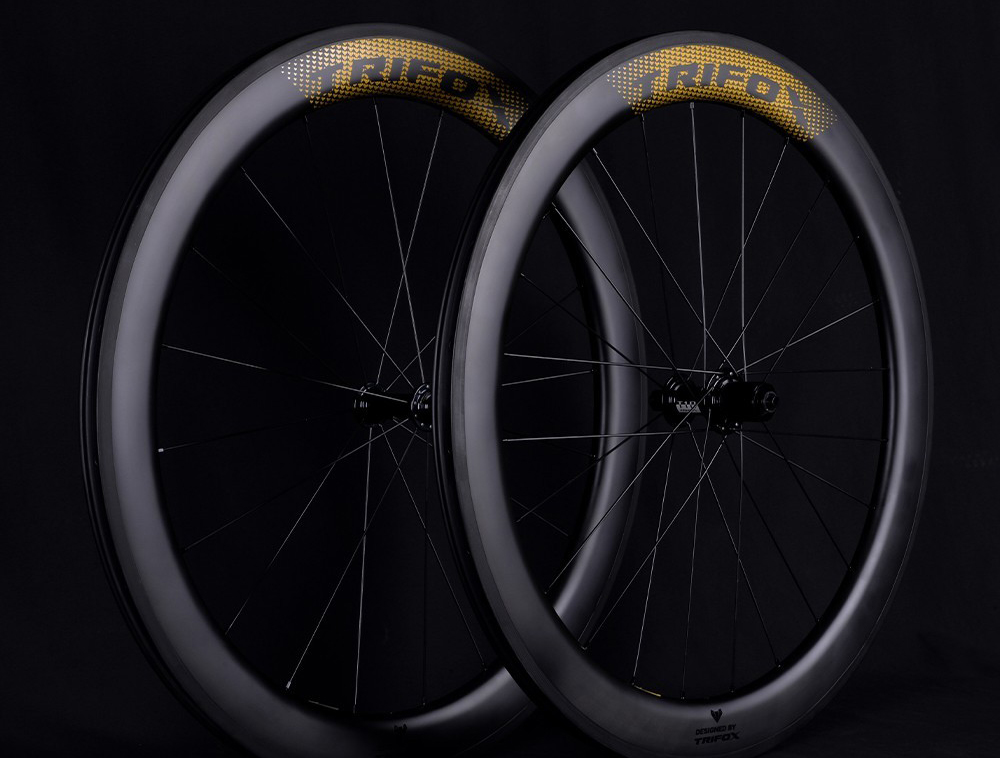
When it comes to cycling, performance is key. One component that plays a pivotal role in how your bike behaves is the wheelset. For road cyclists, carbon rim brake wheels are an increasingly popular choice. They’re lightweight, strong, and offer superior braking performance. But what are carbon rim brake wheels, and why are they so popular? 1. What Are Carbon Rim Brake Wheels? Carbon rim brake wheelset are made of a carbon fiber composite that makes them much lighter than traditional aluminum wheels. They’re also superior in terms of strength and stiffness, which means they offer better handling and responsiveness. The braking surface of a carbon rim brake wheel is made of a special material that provides excellent stopping power even in wet conditions. This is a significant advantage over traditional aluminum wheels, which tend to lose stopping power in the rain. 2. The Advantages of Carbon Rim Brake Wheelset There are several advantages to using carbon rim brake wheels on your road bike. As we’ve already mentioned, they’re lightweight and strong, which means you can enjoy a more responsive ride. They also offer superior braking performance, which can be the difference between a safe ride and a dangerous one. In addition, carbon rim brake wheels will typically last longer than traditional aluminum wheels due to their superior strength. Finally, carbon rim brake wheels look great, with their sleek, modern design adding a touch of style to any road bike. 3. The Importance of Proper Maintenance While there are many advantages to using carbon rim brake wheels, it’s important to keep in mind that they do require proper maintenance. One of the most important aspects of maintenance is ensuring that you’re using the correct brake pads. It’s also essential to regularly inspect your wheels for any signs of wear or damage. Proper storage is also crucial, as carbon rim brake wheels can be susceptible to damage from impacts, excessive heat, and humidity. 4. How to Choose the Right Carbon Rim Brake Wheelset When it comes to choosing the right carbon rim brake wheels for your road bike, there are several factors to consider. First and foremost, you’ll want to determine your budget, as carbon rim brake wheels can be quite expensive. You’ll also want to consider things like weight, stiffness, and aerodynamics. Additionally, it’s important to choose a reputable brand that is known for producing high-quality, reliable wheels. 5. Recommended Carbon Rim Brake Wheels If you’re in the market for a reliable set of carbon rim brake wheels, there are several options available. One popular choice is the TriFox Carbon Road Bike Wheels, which are lightweight, durable, and offer excellent braking performance. They’re available in a variety of sizes to fit virtually any road bike. Carbon rim brake wheels are an excellent choice for serious road cyclists who are looking for the best possible performance from their equipment. By choosing a reputable brand and properly maintaining your wheels, you can enjoy a lighter, stronger, more responsive ride, with superior braking performance in all conditions.
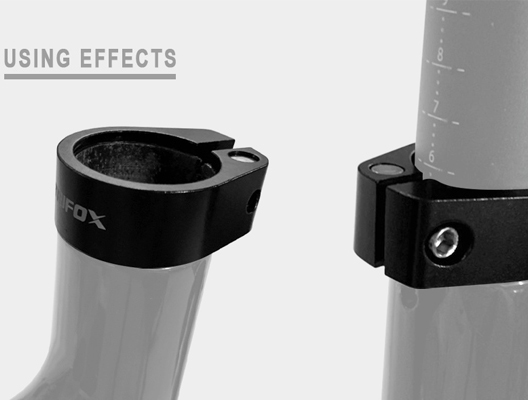
One of the most essential parts of your bike is the seat post. It is responsible for the comfort of your ride and stability while cycling. The seat post clamp, on the other hand, is responsible for keeping the seat post in place. If you're looking for a new seat post clamp, you might want to consider a quick-release post clamp. In this blog post, we will discuss the pros and cons of using a quick-release post clamp and help you decide if it's the best option for your bi What is a Quick Release Post Clamp? A quick-release post clamp is a mechanism that allows you to remove and adjust the seat post of your bike easily. This mechanism uses a lever that attaches to a cam system, which tightens and loosens the seatpost. It provides an easy way to adjust saddle height on the go and transfer the saddle and post between bikes. Pros of Using a Quick Release Post Clamp 1. Easy Adjustability- One of the main advantages of quick release post clamps is that they provide an easy way to adjust the seat height on the go. This feature is especially useful for mountain bikers who need to frequently switch between uphill and downhill riding positions. 2. Easy Maintenance- Quick-release post clamps are easier to maintain than traditional clamps since they don't have bolts or screws that can easily wear out or rust. 3. Easy to Transfer between Bikes- If you have multiple bikes, using a quick-release post clamp can make it easy to move the seat post and saddle from one bike to another. It can also save you money since you only need to purchase one seat post per saddle for all your bikes. Cons of Using a Quick Release Post Clamp 1. Risk of Theft- Since it's easy to remove a quick-release post clamp, it makes the saddle and post vulnerable to theft. Some riders even remove the clamp and take the saddle with them into their office, which means the bike might be left unsecured. 2. Lower Clamping Force- Traditional clamps tend to have more clamping force and are, therefore, more secure. Quick-release post clamps have less clamping force, which can lead to slipping and movement of the saddle while riding. 3. Less Durable- Quick-release post clamps are made of plastic and can wear out faster than traditional metal clamps. A quick-release post clamp can provide an easy way to adjust the seat post height on the go, transfer the saddle, and maintain your bike. However, it has its drawbacks, like lower clamping force and lower durability. If you're a frequent mountain biker or have multiple bikes, a quick-release post clamp might be the perfect option for you. It would save you time, money, and the hassle of adjusting the seat post every time you switch bikes. However, if you're concerned about theft or need a more secure clamp, then a traditional clamp might be a better option. In the end, it all comes down to personal preference, intended use, and priorities when it comes to your bike's gear.
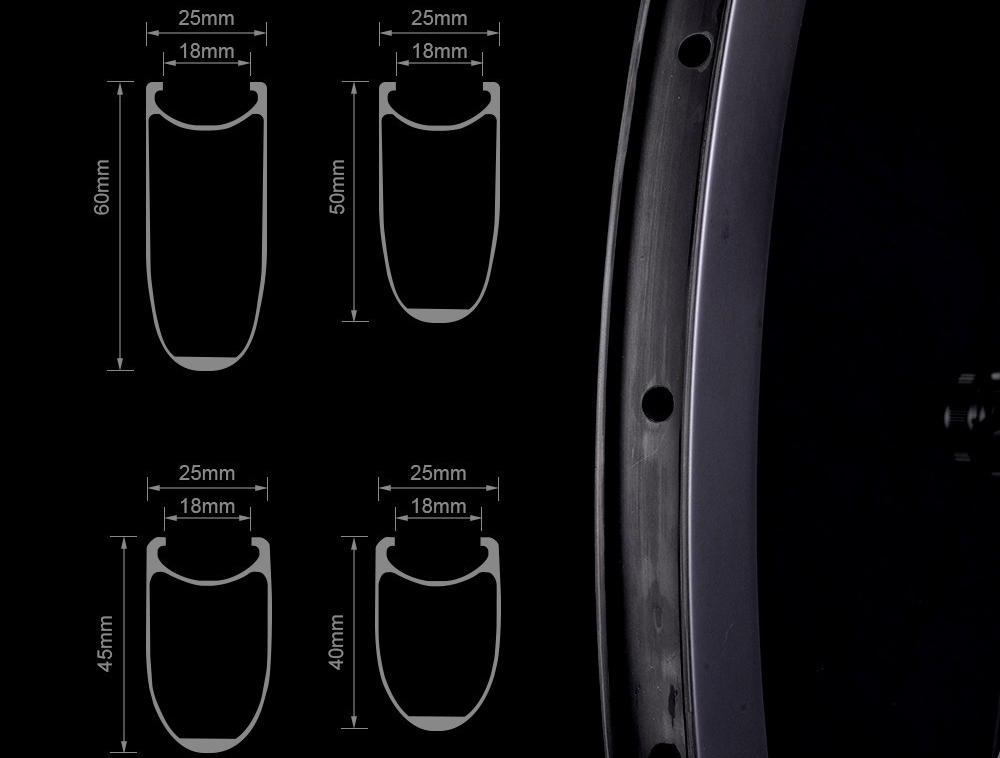
For any cyclist, having a good set of road wheels is integral to achieving peak performance on the road. The wheels you choose can greatly affect your riding experience, from the weight, to the stiffness, to the durability. Carbon and aluminum are two popular materials used in the construction of road wheels, each with their own unique advantages and disadvantages. So, which one is truly better? In this blog post, we will discuss the pros and cons of carbon vs aluminum road wheels, and help you decide which one is the best fit for your cycling needs. Carbon Road Wheels: Carbon road wheels have significantly grown in popularity over the years due to their numerous advantages. Firstly, carbon road wheels are lightweight, making them perfect for hilly or mountainous terrain where a lighter bike can make a great difference. They are also stiffer than aluminum wheels, which means they are a more efficient source of power transfer from the cyclist to the road. Carbon is also known for its ability to dampen vibrations, allowing for a more comfortable ride. The downside of carbon wheels is that they can be costly, and more prone to damage in the event of an impact with potholes, cracks, and other obstructions on the road. Aluminum Road Wheels: Aluminum road wheels are popular for their affordability and durability, making them a great option for beginner or budget-conscious cyclists. They are heavier than carbon wheels but are still lightweight and can be relatively stiff with the right geometry. Aluminum wheels are also less likely to get damaged by potholes and rough roads, giving them a longer lifespan than carbon wheels. However, aluminum wheels can transmit more vibrations to the rider, leading to a potentially less comfortable ride than carbon wheels. Carbon vs Aluminum Road Wheels - Which one should you choose? When deciding whether to go for carbon or aluminum road wheels, it's important to consider your riding goals and needs. If you are looking for a smoother and faster ride, and don't mind spending a bit more, carbon road wheels are a great option. They are light, stiff, and can give you an edge in competitive cycling. However, if you're just starting out, or are on a budget, aluminum road wheels are a solid choice. They are durable, affordable, and can still provide an excellent cycling experience. Beyond the price and the riding goals, there are many factors that cyclists consider when selecting road wheels. Some of these factors include the wheel's weight, its durability, the stiffness, and the aerodynamics. Each material has its own characteristics that can make it more or less suitable for various types of riders, so research carefully before making a decision. In conclusion, carbon and aluminum road wheels both have their unique advantages and disadvantages. Ultimately, the choice between them should largely depend on your own individual cycling needs and goals. Identify what aspects of your wheelset are the most important to you and choose the material that best suits you. Regardless of whether you choose carbon or aluminum road wheels, selecting a high-quality set with a good reputation and proper maintenance can improve your cycling experience greatly. So, happy cycling!
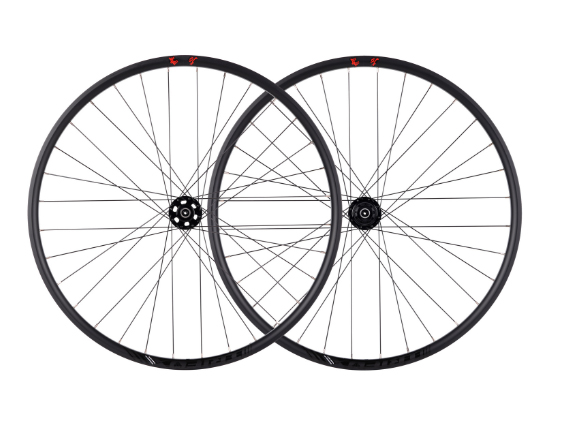
When it comes to cycling, every rider’s goal is to have a smooth and enjoyable ride. And when you decide to upgrade your bike, choosing the right wheelset can make a huge difference in your cycling experience. The latest trend in the biking industry is the 29er wheelset. It’s a bit larger than the standard wheels and comes in a lighter weight that makes it an exceptional choice for different terrains. 1. Increased Speed and Efficiency: One of the most significant advantages of a lightweight 29er wheelset is the increased speed and efficiency that comes with it. The larger wheel size allows you to roll over obstacles, including roots and dips, much more efficiently. You’ll glide over obstacles with ease and pick up speed quickly, which makes it perfect for long rides or races. Additionally, the lighter your bike is, the less energy you’ll need to pedal, which can make a significant difference on those uphill climbs. 2. Improved Handling and Control: A lightweight 29er wheelset can enhance your riding experience by providing better handling and control. With a larger wheel diameter, you’ll have a larger contact patch, which gives you better control while cornering and descents. Compared to 26-inch wheels, the 29er has a greater angle of attack that helps you ride through corners with more stability and ease. You’ll feel a noticeable difference in control when riding rough terrain thanks to the improved stability. 3. Easy Adaptability to Different Terrains: 29er wheelsets are designed for versatility. They perform well in different terrains, including off-road, gravel, and road conditions. A lightweight 29er wheelset will provide extra cushioning on rough terrains without compromising your speed, which makes it an excellent choice for long-distance rides. You’ll also find that the larger wheel size gives you a more comfortable ride than the standard size. 4. Durability and Longevity: When it comes to investing in a bike wheelset, durability is key. With a lightweight 29er wheelset, you can be sure that you’re getting long-lasting and high-quality wheels. A 29er wheelset is built to withstand different terrains and impacts, ensuring that you get the most out of your investment. The aluminum or carbon fiber construction in the wheelset is lightweight, providing high strength-to-weight ratios and durability. 5. Stylish and Eye-catching: Apart from the performance benefits, a lightweight 29er wheelset is bound to enhance the aesthetic appeal of your bike. The bigger wheels look more stylish and eye-catching than the standard size wheels. Additionally, most bike wheelsets come in different colors, allowing you to match them with your bike frame, providing a seamless and polished look for your bike. If you want to take your biking experience to the next level, upgrading to a lightweight 29er wheelset is the way to go. This wheelset provides numerous advantages such as speed, control, adaptability, durability, and style. You can find affordable lightweight wheelsets in various shops and online stores, although be sure to choose a reputable brand to avoid low-quality products. Trifoxbike 29er wheelsets, for example, are known for their strength, durability, and lightweight construction. Upgrade your riding experience today and invest in a lightweight 29er wheelset for your next bike ride!
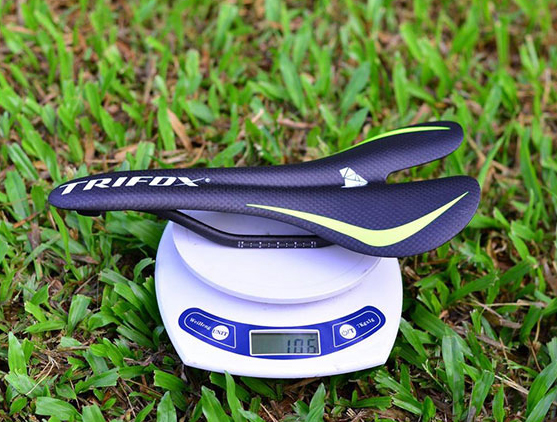
Riding your bike gives you the freedom to explore the world, get some exercise and just have fun. Whether you’re out for a leisurely ride or training for a race, having the right equipment can make all the difference. One of the most important components of your bike is the saddle. It’s the interface between you and the bike, and if it’s not comfortable, your ride can be a nightmare. Finding the right bike saddle is a personal journey, and it can take time. However, with the TriFox CS100 Carbon Bike Seat, you may just find the perfect combination of comfort and performance. Quality is the first thing you’ll notice about the TriFox CS100 Carbon Bike Seat. The carbon fiber material is incredibly lightweight and elegantly designed. Carbon is a great material for bike saddles because it is durable and moulds to your anatomy. The seat is also waterproof, which means that it’s easy to keep clean and resilient against the elements. Whether you’re cycling in the rain, or sweat on the saddle, you don’t have to worry about your saddle getting ruined. Comfort is essential when finding a new saddle, and the TriFox CS100 doesn’t disappoint. The saddle is made with an ergonomic, curved design that enhances your comfort on long rides. The curves create pressure relief points for your sit bones and prevent chafing or rubbing in sensitive areas. The saddle also includes foam padding, which provides extra cushioning and shock absorption for a smooth ride. The TriFox CS100 Carbon Bike Seat ensures you can ride further and longer without discomfort. The TriFox CS100 Carbon Bike Seat isn’t just comfortable, but it also helps with performance. The design is perfect for riders who prioritize speed. The saddle’s slim profile minimizes drag and doesn’t inhibit your movement, allowing you to get the best aerodynamics for your ride. It’s also suitable for riders who experience lower back pain, as the curves in the saddle relieve pressure from the lower back region. Ultimately, the TriFox CS100 Carbon Bike Seat helps you perform better without compromising your comfort. Installation of the TriFox CS100 Carbon Bike Seat is incredibly easy. The saddle comes with all the necessary hardware, including a saddle clamp and wrench, allowing you to attach it to your bike within five minutes. The saddle is also compatible with most bike seat posts, giving you more options for your bike. In addition, the TriFox CS100 Carbon Bike Seat is a great investment, as it’s built to last, durable, and can be easily transferred between different bicycles. In conclusion, finding the perfect bike saddle isn’t always easy. But with the TriFox CS100 Carbon Bike Seat, you get a sleek, stylish, and lightweight option that gives you both comfort and performance. Its curved ergonomic design, foam padding, and pressure relief points combine to ensure you can ride further and longer without discomfort. The installation is easy, and it’s suitable for most bikes and riders. At TriFox, they are committed to providing products that enhance the cycling experience. Give the TriFox CS100 Carbon Bike Seat a try, and you may find just what you need to ride with comfort and performance.
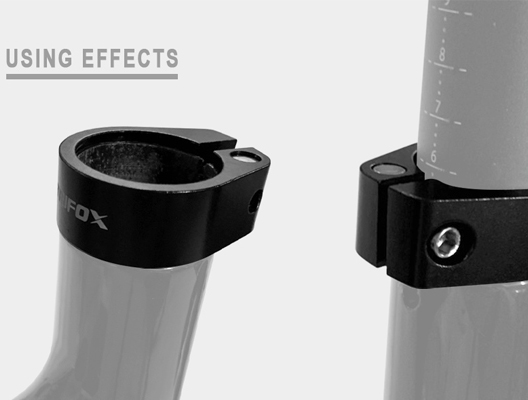
When it comes to bike components, people often focus on the bigger and more visible parts, such as the frame, wheels, and handlebars. However, it is the small and seemingly insignificant parts that can make a huge difference in your bike's performance and overall riding experience. One such component is the seatpost clamp. 1. What is a Seatpost Clamp? A seatpost clamp is a small but vital part that keeps the seatpost firmly attached to the bike frame. It is typically made up of two halves that are bolted together around the seat tube. The clamp's job is to prevent the seat from slipping down while you ride, as well as to allow you to adjust the seat height as needed. 2. Why Does Weight Matter? As with any bike component, weight is a crucial factor in seatpost clamp design. A lightweight seatpost clamp, made from high-quality materials, can help reduce the overall weight of your bike. This, in turn, can provide a significant performance boost, especially when it comes to climbing and acceleration. Additionally, less weight can make it easier to handle your bike, making it more comfortable to ride. 3. What Makes a Lightweight Seatpost Clamp? To make a lightweight seatpost clamp, manufacturers typically use materials such as aluminum, titanium, or carbon fiber. These materials are known for their strength and durability while being lightweight. The design of the clamp's shape and width can also contribute to reducing its overall weight while still maintaining its strength and performance. 4. Durability and Performance While lightweight materials are essential, it is crucial to ensure the clamp remains durable and can perform its primary function over time. Some seatpost clamps are prone to wear and damage, especially if they are repeatedly tightened and released. Therefore, it is essential to pay attention to the material quality and design when choosing a seatpost clamp. 5. Which is the Best Lightweight Seatpost Clamp? When it comes to choosing the best lightweight seatpost clamp for your bike, several factors come into play. In addition to weight and durability, you need to consider factors such as compatibility with your bike's seatpost diameter, ease of use, and price. One option to consider is the Trifox Bike Cycling Seat Post Clip SC35, made from high-quality aluminum alloy and available in a variety of sizes. This clamp is compatible with most bikes and provides excellent strength and durability while being lightweight. A lightweight seatpost clamp is an essential part of your bike setup. It can make a significant difference in your bike's performance and overall riding experience. When selecting a seatpost clamp, ensure you focus on weight, durability, and compatibility. The Trifox Bike Cycling Seat Post Clip SC35 is a highly recommended option because of its lightweight, strength, and ease of use. With this component in place, you can enjoy a smoother and more comfortable ride that enhances your bike's overall performance.
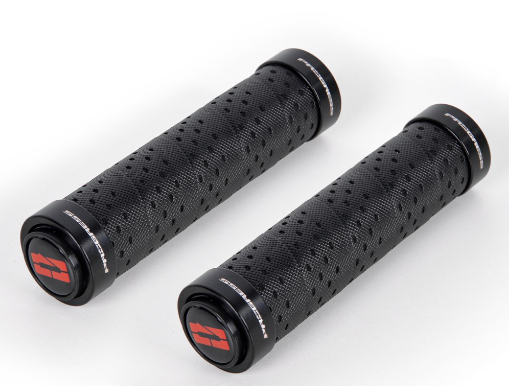
If you’re an avid mountain biker, you will know that the grips on your bike are as important as any other component. They are designed to keep you in control and provide you with a comfortable grip as you ride through rugged terrains. With various types of grips in the market, it can be overwhelming to decide on the perfect one for you. In this article, we take you through the ultimate guide to choosing the most comfortable mountain bike grips. 1. Consider the Material of the Grip Choosing the right material for your mountain bike grip will significantly affect the level of comfort you get during your rides. Grips can either be made out of rubber or silicone. Rubber grips are the most common among bikers, but they tend to wear down quickly and are prone to slip during wet weather conditions. If you want a longer-lasting grip that can handle all weather conditions, opt for silicone grips. 2. Check the Style of the Grip The style of the grip refers to how the grip is designed to suit different types of riders. Some riders prefer thicker grips, while others like thinner ones that give them more control over the bike. Additionally, other grips have specific features like gel padding, which is excellent for shock absorption, and ergonomic design that reduces hand fatigue and strain. 3. Consider the Grip Pattern of the Grip The grip pattern on a mountain bike grip can have a significant impact on how comfortable your ride will be. Grip patterns have varying levels of aggression ranging from smooth to the aggressive diamond pattern. The diamond pattern provides excellent traction, especially when riding in wet and muddy conditions. On the other hand, smooth grips offer a more leisurely ride but are less suitable for challenging terrains. 4. Test the Length of the Grip The length of the grip is another crucial factor to consider when choosing a comfortable mountain bike grip. A grip that is too short will not provide enough leverage, making it difficult to hold the bike when riding through rugged terrain. On the other hand, a grip that’s too long will cause unnecessary added weight and create a bulkier feel. The perfect grip should allow your hands to fit comfortably without leaving any extra length or gaps. 5. Check for Compatibility Before settling on a specific grip, you need to ensure that it’s compatible with your bike’s handlebar. Most grips will fit common bar sizes, but it's essential to double-check before making a purchase. Additionally, read up on how the grips attach to the handlebar. Some grips use a single-sided clamp, while others use locking rings or bolts. In conclusion, choosing the most comfortable mountain bike grip is as much about personal preference as it is about functional requirements. With the various types of grips on the market, it's essential to know what you're looking for in a grip. Always consider the material, style, grip pattern, length, and compatibility before making any purchase. Remember, a comfortable grip translates to better control, longer rides, and less hand fatigue. And if you’re looking for a great option, be sure to check out the Trifox Bicycle Grips. They offer excellent shock absorption, ergonomic design, and a diamond-shaped non-slip pattern, making them a fantastic choice for avid mountain bikers.
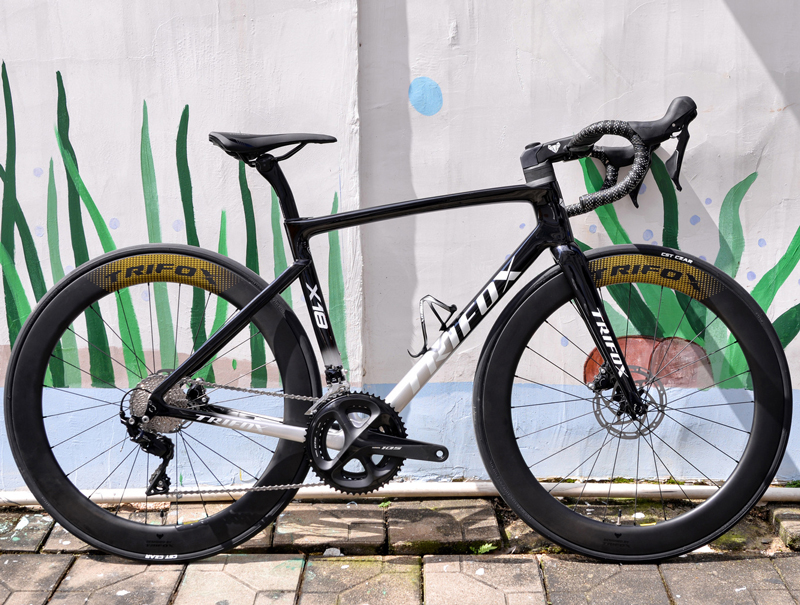
If you're a bike enthusiast, you might have heard about Chinese carbon frameset gravel bikes and the recent boom in the market. Carbon fiber has become a popular choice for bike frames over the years, thanks to its lightweight and durable properties. But the question is, are Chinese-made carbon framesets worth it? Affordability - Chinese carbon frameset gravel bikes are priced much lower than their Western counterparts. The reason being is that labor cost and production cost are much lower in China. This means you can purchase a high-quality bike frame at a fraction of the cost of a Western-made frame. Good Quality - There's a common misconception that Chinese-made carbon framesets aren't as sturdy as those made in the West. However, this is far from the truth. Some of the best components and materials used in bike manufacturing are sourced from China, and most of the Chinese-made frames are rigorously tested to ensure they meet international standards. Customization - A lot of Chinese carbon frameset gravel bike manufacturers offer customization options. You can specify your preferred size, color, and even get your name printed on the frame. This level of customization can be difficult or impossible to achieve with Western and other foreign-made brands. In conclusion, Chinese carbon frameset gravel bikes offer a lot of advantages. They're more affordable, customizable, and of good quality. However, like everything else, they have their drawbacks, such as warranty issues, lack of quality assurance, and delivery hassles. To make an informed purchase decision, do your research. Choose a reputable Chinese bike manufacturer who follows high-quality standards and can offer dependable shipping and customer support, For example, Trifox bike.

















